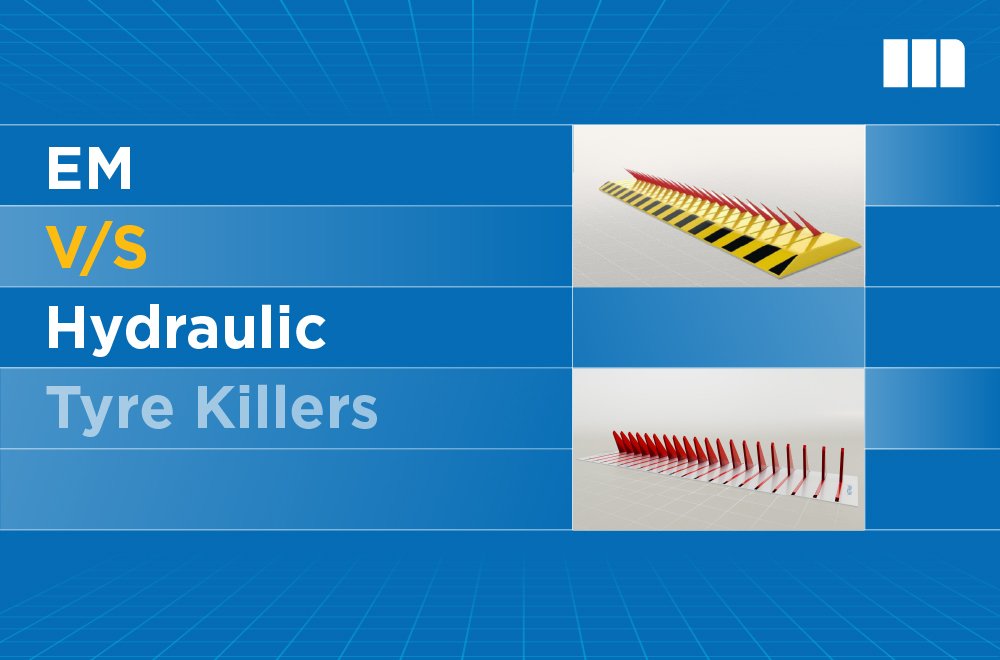A Tyre killer is an anti-vehicle barrier system installed at entry or exit points of premises to prevent forced or unauthorized vehicle access. When activated, sharp steel spikes rise from the ground—if a vehicle tries to pass, the spikes instantly puncture and disable its tyres, stopping it from moving further.
⚡ EM (Electro-Mechanical) Tyre Killer
- Mechanism: Uses electric motors, gears, and actuators to raise and lower the spikes.
- Operation: Controlled via an electrical panel; when power is applied, the motor drives the spikes up or down.
- Speed: Moderately fast, but slower than hydraulics in heavy-duty applications.
- Load Handling: Suitable for medium-security sites (parking lots, residential complexes, commercial facilities).
- Maintenance: Mechanical parts (gears, motors) need regular service. More prone to wear and tear.
- Cost: Generally lower than hydraulic systems.
🛢 Hydraulic Tyre Killer
- Mechanism: Uses hydraulic cylinders powered by a pump to raise/lower the spikes.
- Operation: Much smoother and faster actuation compared to EM, especially under heavy loads.
- Load Handling: Designed for high-security, high-traffic areas (airports, military bases, embassies, sensitive government sites).
- Durability: Handles heavy vehicle impacts, higher duty cycles, and continuous operations better than EM.
- Maintenance: Requires upkeep of hydraulic oil, seals, and pumps, but typically more reliable in harsh conditions.
- Cost: More expensive due to robust design and hydraulic components.
⚖️ Quick Comparison Table
| Feature | EM Tyre Killer ⚡ | Hydraulic Tyre Killer 🛢 |
| Actuation | Electric motor + gears | Hydraulic pump + cylinders |
| Speed | Moderate | Fast & smooth |
| Load capacity | Medium-duty | Heavy-duty, crash-rated |
| Best suited for | Commercial & private sites | High-security & critical sites |
| Maintenance | More mechanical wear | Hydraulic oil & seals |
| Cost | Lower | Higher |
✅Conclusion:
- EM tyre killers → cost-effective, simpler, best for moderate security applications.
- Hydraulic tyre killers → more robust, reliable, and suited for high-security and heavy-duty environments.




